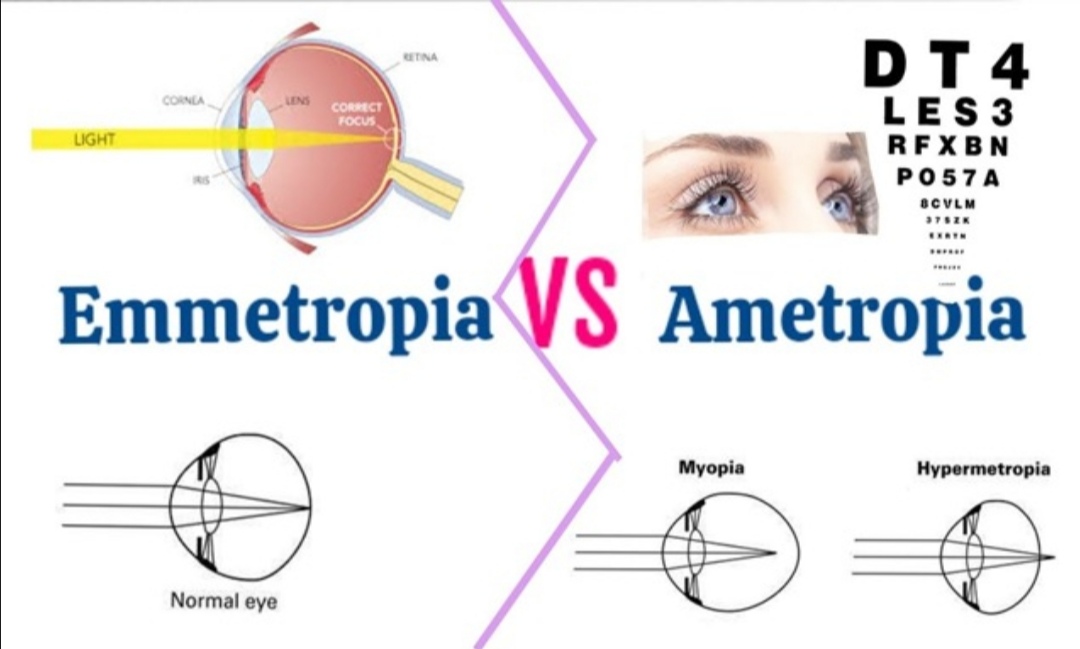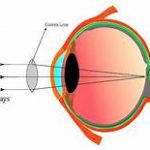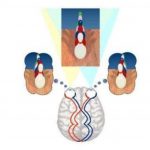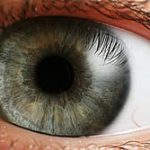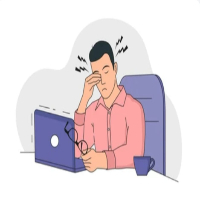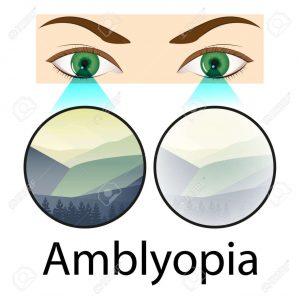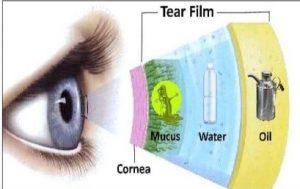Emmetropia means normal eye ( i.e – any type of abnormality is not found ) If ocular adnexa ( all of the part of eye ) is normal , and parallel light rays are coming from any object it passes the cornea , lens and focus on retina ( Fovea centralis ) , they form a perfect image ( shape, size , colour and all of the part are formed very clearly and distinctly ) — Now we can define like this.
Emmetropic (from the Greek emmetros = proportionate or measurement & Ops = Eye) When the image of an object located at perfect focus, it is formed on the retina with unaccommodated eye. An emmetropic eye sees distant objects clearly, without using accommodation.
In the Emmetropic eye, the retina is conjugate with optical infinity & therefore lies in the image focal plane of the ophthalmic system.
The eye as an optical system : The Unaccommodated Emmetropic eye can be modeled as an optical system composed of the cornea, the aqueous humour, the crystalline lens & the vitreous humour. These constitute a homocentric system of lenses which, when combined in action, form a very strong refracting system of a short focal length.The characteristics of one such theoretical system is called a schematic eye are shown in the table:

Axial length of eyeball :24.09mm
Total dioptoric power of Emmetropic eye : 60D
At birth, the eyeball is relatively short & having hypermetropia. Which is gradually reduced but at the age of 5-7 to 50 years, there is a tendency to develop hypermetropia again.
AMETROPIA : An eye which is not correctly focused that means where the image of a distant object is not formed on the retina of the Unaccommodated eye that is said to have a refractive error or Ametropia.
The different types of ametropia are classified into three Categories
1. Myopia 2. Hypermetropia 3 .Astigmatism
1.MYOPIA (shortsightedness) : Myopia is the State of refractive error in which the image of an object located at perfect focus is formed by the eye in accommodation relaxed state in front of the retina. The word MYOPIA comes from the latin myops & Greek myops meaning a person who narrows the eyes. The person with uncorrected myopia sees distant objects as blurred but can see close object clearly. Optically, the myopic eye presents an excess of power relative to its length. This may be classified either as being because it is too long relative to its power(the majority of cases for myopia in excess of 5.00D) or because the eye is too powerful relative to its length. Myopia is corrected by the introduction of a minus powered lens or concave lens, so as to image back & reposition it onto the retina.
2.HYPERMETROPIA(Longsightedness) : Hypermetropia or hyperopia is the state of refractive error in which the image of an object located at perfect focus is formed by the eye in accommodation relaxed state behind the retina. The word HYPERMETROPIA comes from the Greek words hyper = beyond & ops= eye. Optically, the hypermetropic eye presents a lack of power relative to its length. This may be classified either as because it is too short relative to its power (the majority of cases for hypermetropia in excess of 5D) or because it is insufficiently powerful relative to its length. Hypermetropia is corrected by the introduction of a plus powered lens or convex lens so as to move the image forward & reposition it onto the retina.
3.ASTIGMATISM : An eye is said to be asymmetric when its optical power & therefore its focus differs according to its different meridian. The eye thus present an asymmetric ametropia with different focal positions in different planes. For example, a person with astigmatism who is looking at a capital letter E may see the vertical line clearly but the horizontally blurred. In an astigmatic eye, there is always a meridian of maximum refractive power, these are termed as the principal meridians, between these the refractive power varies within the maximum & minimum limits.
Components of ametropia : It’s determined by four components Corneal power : 40D to 45D Anterior chamber depth : 3.4 mm Crystalline lens power : 15D to 20D Axial length : 24mm Accommodated Eye & Unaccommodated eye Are you facing problem in following situations: You can not see clearly the black boards in your classroom? During the near work, you can’t see the letter correctly? You can’t see anyeone clearly, until or unless he or she won’t come closer to you? Sometimes you feel headache? Is your child bending too much during reading the book ? Whenever looking at the object can see black shadows only ? Shape and size of the object looks distorted ?Sometimes you feel eye strain?
— all of these are ammetropic condition ,You need an eye check-up as soon as possible. You need to contact with an eye care professional an OPTOMETRIST or an OPHTHALMOLOGIST.

